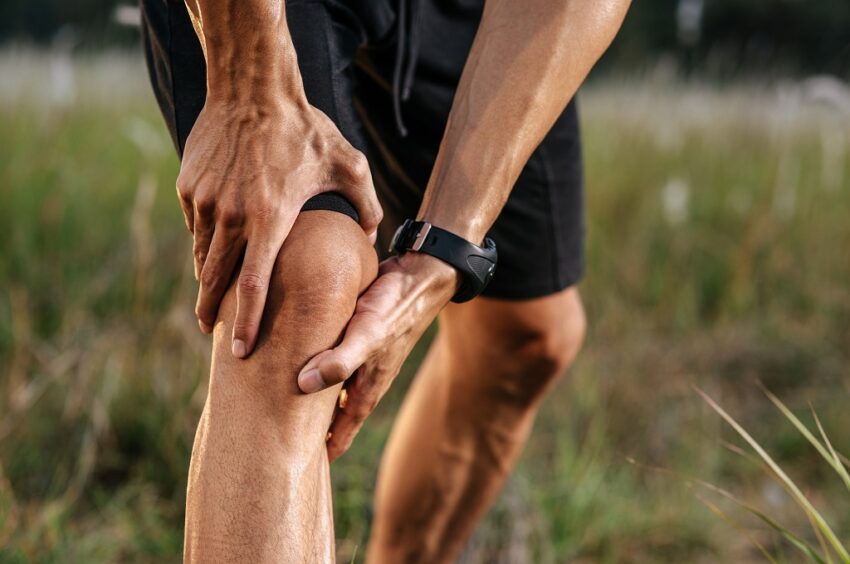When we suffer an injury, it's common to feel frustrated and discouraged. However, recovery doesn't have to be a road full of uncertainty or rely solely on conventional treatments such as ice, rest or anti-inflammatories. Taking a comprehensive approach can speed up tissue repair and get us back to our daily routine more safely and effectively.
The role of nutrition and supplementation
The healing process begins with the body's natural response to damage, in which inflammation plays a key role in removing damaged cells and paving the way for regeneration. However, uncontrolled inflammation can hinder repair. This is where diet and certain supplements become essential allies.
To achieve proper balance, it is important to:
- Incorporate omega-3 in moderate doses:
Consuming between 3 and 9 grams of omega-3 fatty acids daily helps regulate inflammation without inhibiting its protective function. Maintaining a good ratio between omega-3 and omega-6—present in many vegetable oils and processed foods—is key to optimal inflammatory processes. - Using garlic and bromelain:
Garlic, with its natural compounds, reduces the activity of pro-inflammatory enzymes and moderates the immune system response. If you prefer to avoid its strong aroma, garlic extracts (600 to 1200 mg daily) are an excellent alternative. Similarly, bromelain, an enzyme derived from pineapple, has anti-inflammatory and analgesic properties when consumed in doses of 500 to 1000 mg daily.
In addition, it is vital to stimulate tissue regeneration. In this sense, the insulin-like growth factor (IGF-1) plays a crucial role, as it promotes muscle and bone repair. To boost its production naturally, it is recommended:
- Consume protein and zinc:
Proteins are the essential building blocks for repairing damaged tissue, while zinc aids in the synthesis and function of multiple enzymes involved in healing. - Bet on natural compounds:
Incorporating isoflavones—mainly found in soy—and capsaicin—found in most spicy foods—into the diet can have a synergistic effect on the production of IGF-1, supporting cell regeneration more efficiently. - Choose quality fats:
Some select cuts of red meat provide not only proteins, but also essential fats that facilitate the regeneration and reinforcement of muscle and bone mass.
Temperature management as an ally
Temperature control is another powerful tool in the recovery process. On the one hand, applying ice to the affected area helps reduce pain and control inflammation in the early stages of injury. However, it is essential to use it in moderation so as not to interfere with cellular repair.
On the other hand, heat can stimulate repair mechanisms in the body. Short sauna sessions or localized application of heat activate the production of heat shock proteins, which help repair damaged proteins and facilitate muscle growth. In addition, heat promotes the release of human growth hormone (HGH), which increases the synthesis of IGF-1 and, consequently, accelerates recovery.
The influence of emotional well-being
The mental aspect is as important as the physical aspect in the healing process. The perception of pain, along with anxiety and stress, can prolong recovery and limit the proper use of the affected area. Therefore, meditation and mindfulness techniques become valuable tools. By focusing the mind and reducing emotional tension, a favorable environment is created for the body to focus on its regenerative capacity, accelerating rehabilitation.
Complementing the recovery process
To support these approaches, we must not forget other essential nutrients:
- Vitamin C: Essential for the production of collagen, a protein vital to the structure of connective tissues.
- Magnesium: This mineral not only contributes to the synthesis of IGF-1, but also supports various crucial cellular functions during recovery.
- Increased protein intake: Increasing the amount of protein in your diet helps repair muscle tissue and maintain body mass, enhancing the healing process.
Conclusion
Coping with an injury doesn't mean resigning yourself to a slow and painful process. By taking a comprehensive approach, we can enhance the body's natural ability to heal and recover. This method not only reduces rehabilitation time, but also strengthens the body for future challenges, allowing you to return to your daily activities with greater confidence and well-being. The key is to listen to your body and support it with the tools that science and nature put at your disposal.
